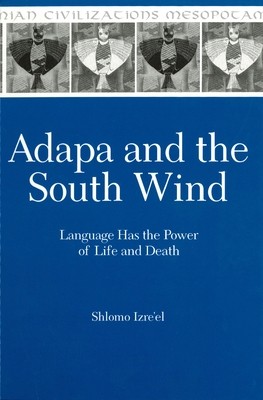
- We will send in 10–14 business days.
- Author: Shlomo Izre'el
- Publisher: Eisenbrauns
- ISBN-10: 1575060485
- ISBN-13: 9781575060484
- Format: 17.8 x 25.4 x 1.3 cm, hardcover
- Language: English
- SAVE -10% with code: EXTRA
Reviews
Description
The scholarly world first became aware of the myth of Adapa and the South Wind when it was discovered on a tablet from the El-Amarna archive in 1887. We now have at our disposal six fragments of the myth. The largest and most important fragment, from Amarna, is dated to the 14th century B.C.E. This fragment of the Adapa myth has red-tinted points applied on the tablet at specific intervals. Izre'el draws attention to a few of these points that were missed in previous publications by Knudtzon and Schroeder. Five other fragments were part of the Assurbanipal library and are representative of this myth as it was known in Assyria about seven centuries later.
The discovery of the myth of Adapa and the South Wind immediately attracted wide attention. Its ideology and its correspondence to the intellectual heritage of Western religions precipitated flourishing studies of this myth, both philological and substantive. Many translations have appeared during the past century, shedding light on various aspects of the myth and its characters. Izre'el unveils the myth of Adapa and the South Wind as mythos, as story. To do this, he analyzes the underlying concepts through extensive treatment of form. He offers an edition of the extant fragments of the myth, including the transliterated Akkadian text, a translation, and a philological commentary. The analysis of poetic form that follows leads to understanding the myth as a piece of literature and to uncovering its meanings. This study therefore marks a new phase in the long, extensive research into this Mesopotamian myth.
EXTRA 10 % discount with code: EXTRA
The promotion ends in 21d.00:35:34
The discount code is valid when purchasing from 10 €. Discounts do not stack.
- Author: Shlomo Izre'el
- Publisher: Eisenbrauns
- ISBN-10: 1575060485
- ISBN-13: 9781575060484
- Format: 17.8 x 25.4 x 1.3 cm, hardcover
- Language: English English
The scholarly world first became aware of the myth of Adapa and the South Wind when it was discovered on a tablet from the El-Amarna archive in 1887. We now have at our disposal six fragments of the myth. The largest and most important fragment, from Amarna, is dated to the 14th century B.C.E. This fragment of the Adapa myth has red-tinted points applied on the tablet at specific intervals. Izre'el draws attention to a few of these points that were missed in previous publications by Knudtzon and Schroeder. Five other fragments were part of the Assurbanipal library and are representative of this myth as it was known in Assyria about seven centuries later.
The discovery of the myth of Adapa and the South Wind immediately attracted wide attention. Its ideology and its correspondence to the intellectual heritage of Western religions precipitated flourishing studies of this myth, both philological and substantive. Many translations have appeared during the past century, shedding light on various aspects of the myth and its characters. Izre'el unveils the myth of Adapa and the South Wind as mythos, as story. To do this, he analyzes the underlying concepts through extensive treatment of form. He offers an edition of the extant fragments of the myth, including the transliterated Akkadian text, a translation, and a philological commentary. The analysis of poetic form that follows leads to understanding the myth as a piece of literature and to uncovering its meanings. This study therefore marks a new phase in the long, extensive research into this Mesopotamian myth.


Reviews